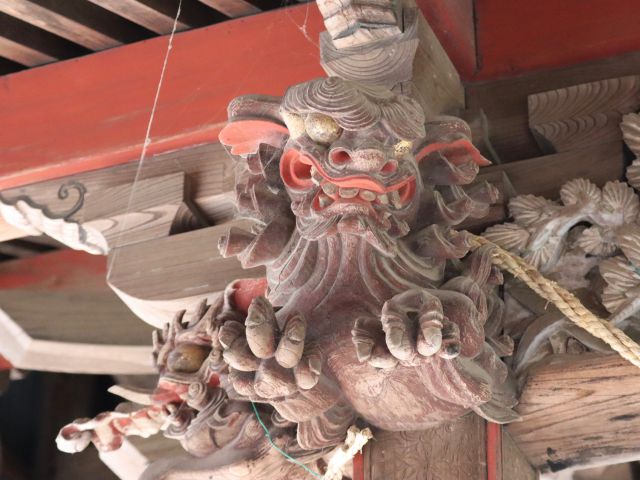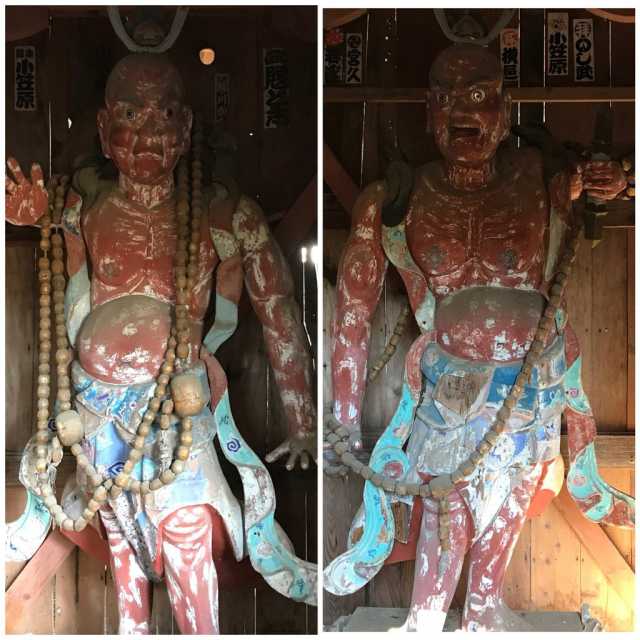At shrines and temples you often see a pair of Shishi (foodog), one is with mouth open the other with mouth shut. This rule is not only for Shishi but also for gate keepers, dragons, tigers… Many pairs have mouth open and shut.
Karajishi in A-gyo below the pent roof.

Karajishi in Un-gyo below the pent roof

This is originally from Ommyo-do (Japanese Yin Yang, based on Taoist theory and mixed with Shinto and Buddhism).
Oni mask in A-gyo on top of the roof.

Oni mask in Un-gyo on top of the roof.

Opened mouth is called A-gyo (pronounced ahh-gyō), means “the beginning”.
Closed mouth is called Un-gyo, means “the end”.
Dragon in A-gyo of the beam.

Dragon in Un-gyo of the beam.

Rikijin (power god) in A-gyo on the beam.

Rikijin (power god) in Un-gyo on the beam.

Gate keepers in A-gyo and Un-gyo at the gate.

If you put a dragon tattoo with mouth open on your one side you need to put another one with mouth shut on the other side. This is one of the traditional ways of Japanese tattoos.
龍 dragon in A-gyo.

龍 dragon in Un-gyo.

Normally A-gyo is put on the right and Un-gyo left as you face, but there are exceptions.
Tattooist Ryugen
Roppongi Tokyo